The changing colours of the universe
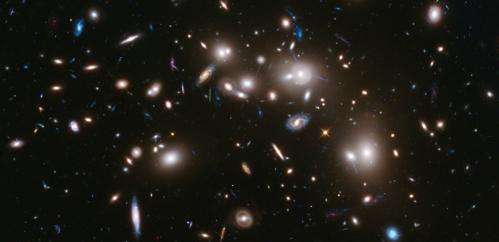
We know we live in an expanding universe but it's also changing colour and has been doing so for billions of years.
Take a look at a Hubble image of the distant universe and you will see hundreds of galaxies that come in a variety of shapes and colours. So what are we seeing?
Stretching light
In our expanding universe, galaxies are rushing away from us at vast speeds. Nearby galaxies, only millions of light years from Earth, are speeding away at hundreds of kilometres every second. More distant galaxies, billions of light years away, are rushing away at speeds in excess of 100,000 kilometres every second.
A natural consequence of this rapid expansion is the stretching of light via the Doppler Effect.
This stretching of light is similar to the stretching of sound waves here on Earth. The pitch of the sound from a motorcycle is lowered as it moves away from you. Just as sound waves are stretched (lower pitch) as a motorcycle races away, the light waves are stretched (redder light) as a distant galaxy races away.
When we look at distant galaxies, we are looking into the past, as light can take billions of years to travel across the universe. This presents an opportunity for astronomers to directly observe the ancient universe.
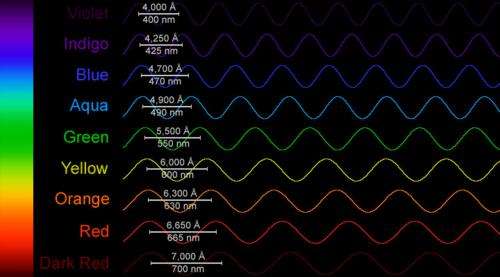
But the Doppler Effect presents a problem. When we take a visible light image, we can detect ultraviolet light from the most distant galaxies that has been stretched (by the expanding universe) into the visible part of the spectrum.
Astronomers using visible light images to study nearby and distant galaxies thus risk comparing apples and oranges when trying to understand how the universe evolves.
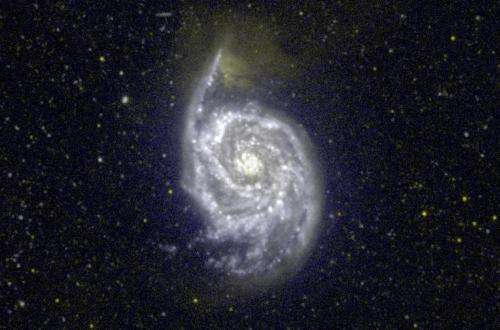
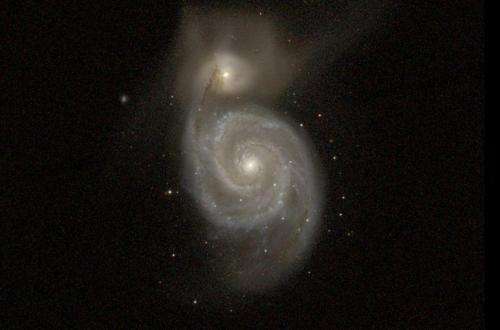
We need a Galaxy Atlas
If you precisely measure the light emitted by galaxies across the spectrum (including the , and light) you can can for the Doppler Effect. You can also compare light from nearby and distant galaxies that was emitted in the same part of the spectrum of light.
Collaborating with colleagues from across the globe, I have produced a new that includes images and spectra taken in ultraviolet, visible and infrared light. Our atlas will be published in the May volume of the .
As ultraviolet and infrared light is largely blocked by our atmosphere, the atlas incorporates data from the , , , and spacecraft.

Data from ground-based telescopes includes spectra from the University of Arizona's and images from the and . My colleagues and I were fortunate to have this wealth of data (obtained for a ) for so many nearby galaxies.
Some of the data was archival and , but you cannot simply download it and "cut & paste" it together. Each set of data has its own strengths and weaknesses, which were carefully accounted for when producing the atlas.
For example, images from the GALEX and WISE satellites are somewhat fuzzy (), so faint galaxies can be swamped by light from neighbouring celestial objects.
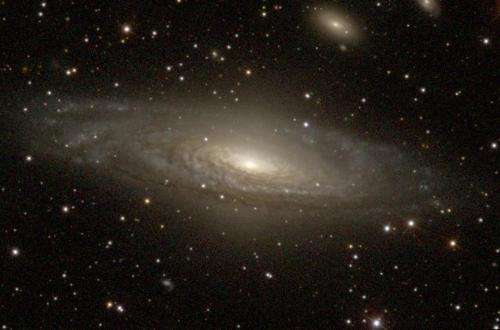
Some galaxies in the atlas are similar to our own galaxy, the Milky Way. is one such galaxy, and in the visible part of the spectrum we see blue tinged starlight and dark lanes of obscuring dust. This galaxy takes on a different complexion in the infrared, where glowing warm dust (heated by massive stars) dominates the view.
Chameleons in space
Not all galaxies look like the Milky Way and NGC 7331. For example, is far larger and redder than our galaxy, it has little obscuring dust and that is the mass of the Sun.
The colours of individual galaxies are also changing. After correcting for the Doppler Effect, astronomers find that galaxies (on average) were than they are today. Ten billion years ago there were no big red galaxies like Messier 87. So why is the universe changing colour?
When stars are born inside giant clouds of gas and dust, they are born with a range of masses.
The biggest stars are very bright, very blue and use their hydrogen fuel so quickly that they die young. The smallest stars are quite dim, very red and sip away at their hydrogen fuel for tens of billions of years. Our Sun falls somewhere in the middle, and is half-way through its ten billion year life.
As the bluest stars have very short lifetimes, a galaxy will get progressively redder unless new stars are being formed. In some galaxies, like Messier 87, star formation finished roughly ten billion years ago and they have been getting progressively redder ever since.
Many galaxies, including the Milky Way and NGC 4631, are still forming stars today.
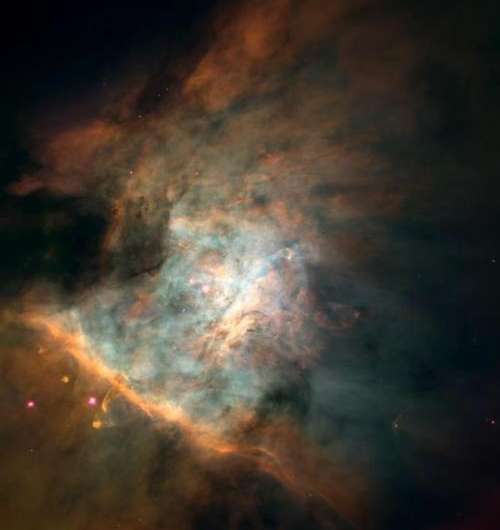
Even a cheap pair of binoculars will reveal the in the sword of the , a Milky Way stellar nursery where .
Star formation in our galaxy may come to an end after it in four billion years.
Across the universe, , and as the number of blue stars decreases our universe will become a duller and redder place.
So what is the current colour of the universe? Karl Glazebrook and measured the colours of thousands of nearby galaxies with the Anglo-Australian .
As our universe contains a mix of red and blue stars, with a pinch of dust thrown in, we live in a universe. At least for now.
Source: The Conversation
This story is published courtesy of (under Creative Commons-Attribution/No derivatives).
![]()





















